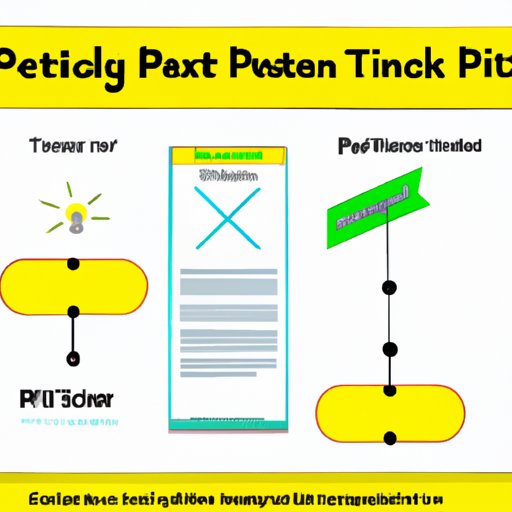I. Introduction
Submitting an invention idea can be nerve-wracking, but it’s an essential step in bringing your creation to life. Whether you’re an experienced inventor or taking your first steps into the world of innovation, submitting an invention idea effectively is critical to success. This article will guide you through the essential steps in submitting invention ideas, provide tips for maximizing your chances, and outline common pitfalls to avoid.
II. 8 Simple Steps to Submit Your Invention Idea Like a Pro
Submitting an invention idea can seem daunting, but it doesn’t have to be. With these eight steps, you can submit your invention idea like a pro:
- Document your invention idea with detailed drawings and notes.
- Perform a patent search to ensure your idea hasn’t already been patented.
- Make sure you have rights to your idea before submitting it.
- Determine the best method of submission for your invention idea.
- Prepare a professional and descriptive executive summary that highlights the key features of your invention.
- Submit your invention idea to a trusted company or development agency.
- Wait for a response from potential investors, and be prepared to negotiate.
- Protect your idea with a provisional or non-provisional patent.
III. A Beginner’s Guide on How to Submit Invention Ideas
For beginners, submitting an invention idea can seem overwhelming. Here are some basic tips:
- Start by sketching out and documenting your idea, noting details like dimensions and materials.
- Before you submit your idea, perform a patent search to make sure your idea is unique.
- Check if you have ownership of the idea before submitting it to someone else.
- When you’re ready to submit, make sure you have a professional executive summary that describes your invention, its features, and its benefits.
- Make sure you understand the potential risks and rewards of invention submission before you start.
IV. Maximizing Your Chances: Tips for Submitting Invention Ideas
If you’re looking to maximize the chances of your invention idea being accepted, here are some tips to keep in mind:
- Make sure your idea is unique and innovative; investors seek novelty and creativity.
- Focus on providing market value; explain how your idea can solve or improve an existing problem.
- Be prepared with a comprehensive business plan and prototype to showcase your idea.
- Choose the right company or agency to submit your ideas; trust and good reputation are key factors.
- Be open to feedback and changes; investors may request changes that can ultimately benefit your invention.
V. Avoiding Pitfalls: A Comprehensive Guide to Submitting Invention Ideas
Submitting invention ideas can also come with common pitfalls to avoid. Here are some of the most common mistakes and how to prevent them:
- Not performing a thorough patent search before submission may waste time and money, and potentially harm the integrity of your invention idea.
- Sharing your idea with the wrong people or companies without protecting your interests may result in infringement or unwanted production of your invention.
- Not securing a provisional or non-provisional patent can result in losing your invention’s intellectual property rights to another party.
- Ignoring feedback or not making changes suggested by investors can lead to rejection of your idea.
- Failure to read and fully understand the terms of an agreement may result in signing away important rights and benefits.
VI. From Idea to Patent: A Step by Step Guide to Submitting Invention Ideas
Obtaining a provisional or non-provisional patent for your invention is an important safeguard for your invention idea. Here is an overeview of the patenting process:
- Document your invention idea and perform a thorough patent search.
- Determine the type of patent you need. Most inventors apply for a utility patent which covers novel, non-obvious, and useful inventions.
- File your provisional or non-provisional patent application with the United States Patent and Trademark Office (USPTO).
- Wait for your patent application to be processed, which may take one to three years.
- Once your patent is issued, your invention is now legally protected from infringement by unauthorized parties.
VII. Conclusion
Submitting invention ideas is an exciting and rewarding process, but it requires careful planning and an understanding of the steps involved. By following the tips and avoiding the common pitfalls outlined in this article, inventors can increase their chances of success and bring their creations to life.
(Note: Is this article not meeting your expectations? Do you have knowledge or insights to share? Unlock new opportunities and expand your reach by joining our authors team. Click Registration to join us and share your expertise with our readers.)
